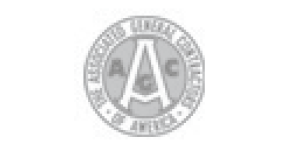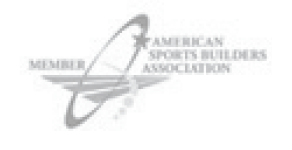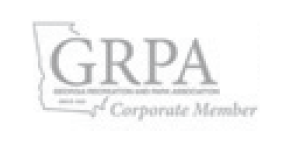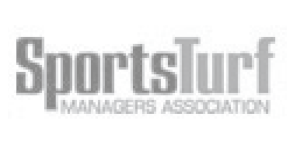Artificial Turf 101
Once you decide you want artificial turf, that is day one in in a process which you hope will lead to a phenomenal playing surface. It is a big investment and you deserve the very best synthetic field, but also the very best constructed foundation to support it. Sports Turf Company specializes in sports field construction and has a wide range of the most advanced artificial turf options to customize your dream facility and 26 years of expertise pioneering technologies for building synthetic turf fields and proper drainage.
We encourage owners to contact us so we can talk about your needs and help you understand which options are best for you. You will want to consider whether your athletic field will host hundreds of games a season or only fifteen games a year, whether it will be used for multiple sports, overall budget, importance of safety and more.
Technology in synthetic turf changes rapidly. Turf systems today are based on shorter length fibers and much greater density so athletes actually play on the synthetic turf instead of only playing on the turf infill between the fibers. You’ll hear terms such as monofilament, slit film, blended fiber, root zone, in-fill and force reduction.
It can be overwhelming and challenging to discern between the products from various companies. Sports Turf Company is an athletic field construction company, that will guide you through selecting the best course for your facility, athletes, parents, coaches, trainers, athletic directors, board members or any other stakeholders. We have had experience with most of the major synthetic turf manufacturers over the years and have the ability to work with any of them.
In recent years, we’ve seen AstroTurf leapfrog the rest of the industry in capabilities, safety, design, durability and heat reduction. Artificial grass fields can utilize SBR rubber infill or we have synthetic systems completely designed around non-rubber infills such as Zeofill or Nike Grind. Safety has evolved beyond rubber infills with synthetic systems that utilize a Brock pad and offer force reduction values similar to natural grass fields while providing a playing surface that is firm and fast. AstroTurf pioneered the industry 50 years ago and have invested heavily in research and development to create unparalleled synthetic turf solutions, backed by the most trustworthy warranty in the business.
Sports Turf Company’s experience insight and independent evaluation is invaluable in advising you, the owner or architect. Sports Turf Company is in a unique position to combine our expertise with your needs to advise you on what is the very best artificial grass product instead of which product some manufacturer makes the highest margin on.
The artificial grass systems we recommend outperform and outlast the competition in every aspect. They have the best warranties in the industry and are backed by companies with integrity which honor them. They mimic natural grass and create the safest playing field for your athletes. What makes a good synthetic field system? Tell us what is most important to you as an owner.
For those who want to know just a bit more before making a call, here is a little Artificial Turf 101 to help get you up to speed…
Warranty
Lots of companies make promises on warranties, but a warranty is only as good as the integrity of the company offering it. The Industry standard in synthetic field construction is 8 years, insured through a 3rdparty. Some advanced synthetic systems offer 10 year warranties and some pads for underneath synthetic systems offer 16 year warranties. NEVER accept a product that utilizes a prorated warranty. If your field doesn’t make it through its 8 year period, you need a new field, not a check for 1/8 of a new field. Also, read the exclusions and the requirements on your part to not void the warranty. The more hoops you have to jump through, the more difficult it will be to enforce a warranty and you might want to question doing business with that company. Check to see if the warranty guarantees the field to remain below a specific force reduction value. American Society for Testing and Materials (ASTM) sets a maximum G-max rating of 200, above which “qualifies for the expectation that life threatening head injuries may occur.” We’re not comfortable with your young athletes playing on that and you shouldn’t be either. Our industry partners, the Synthetic Turf Council and the NFL have adopted a much lower maximum G-max rating of 165. AstroTurf even has products with a 10 year warranty that have demonstrated G-max ratings below 110. Our young athletes deserve the safest fields possible and the warranty should ensure it will stay that way for the life of the field.
Durability
Fibers in synthetic fields built by Sports Turf Company are durable. There are options for blended fiber technologies that leverage the natural grass look of monofilaments with the durability of slit film fibers.
Prefab
Many of the synthetic field systems can be prefabbed. That means the lines and numbers can be cut into the field within the climate controlled confines of a giant warehouse instead of a hot and tired team trying to perform these operations in the blazing sun onsite at a stadium. Quality is superb and the onsite installation time greatly reduced.
Fiber Density
Also referred to as the “Face Weight”, refers to the weight of fibers in a square yard. Many products on the marketplace are in the 36 oz. range. AstroTurf has products available in the 60 oz. and even 80 oz. range. Fiber should do more than mimic the look of grass. Today’s artificial grass fibers go beyond looking pretty to be durable and actually create the playing surface. Fibers are tufted 3/16”-3/8” apart instead of sparser heavy infill systems that are ¾” apart. It goes without saying that the more fiber is present in a synthetic system, the more it will stand up to the constant beating it receives.
Field Temperature
One of the greatest challenges to artificial turf is its higher temperature over natural grass. Specially engineered fibers utilizing AstroFlect, reflect rather than absorb sunlight making them 10% cooler. Infills like Zeofill absorb water and slowly release it to contribute to an additional reduction in temperature.
Read more about the ways to combat heat issues on your synthetic turf here: http://sportsturf.net/whats-hot/
Texturized Rootzone
A texturized rootzone is the latest innovation in synthetic turf. High denier nylon fibers are “texturized” or drawn down and made curly by steam and then alternated with face fibers to hold the face fibers  upright, much like a good quality natural grass field. Rootzone benefits include grass-like traction with reduced torque to lower extremities, less infill spray and improved durability and safety in artificial turf.
upright, much like a good quality natural grass field. Rootzone benefits include grass-like traction with reduced torque to lower extremities, less infill spray and improved durability and safety in artificial turf.
Backing
For optimal performance, turf fibers should be tufted through multiple layers of woven geotextile fabric and then a urethane coating fully applied. The backing provide strength to support the fibers while allowing water to freely flow through to the stone drainage layer beneath. Beware of thin backings or those where manufacturers save money by only partially coating the backing.
Infill
Turf Infill plays several roles in synthetic grass systems. In general, turf infills hold fibers upright and in place. Sand serves as a ballast to weigh down synthetic turf and provides similar footing to natural grass. Crumb rubber has long been the choice for turf infill due to its cost effectiveness. It helps absorb the impact of falls and plays a vital role in force reduction and g-max ratings for safety. Much noise has been made about the risks of crumb rubber and to date there are no scientific studies detailing danger with respect to crumb rubber. We hold that it is more of a Public Relations issue than a medical one. 
That said, replacing the rubber granules should be about designing entirely new synthetic systems with different turf infills rather than just swapping some other substance into a system intended for rubber infill. Some manufacturers have tried to sell a cork based infill as an “alternative” to crumb rubber. However, installing cork in a low fiber / high infill synthetic system designed for rubber causes more problems than it solves. Cork floats and migrates during heavy rains. It also is not guaranteed for the life of the field and must be replaced every few years.
Sports Turf Company believes replacing the rubber granules is about matching infill with a system designed with that infill in mind. For example, zeofill and sand infill in an artificial turf system with a high amount of fiber, provides a fast surface that mimics a natural grass field while a pad provides force reduction similar to a natural grass field. Zeofill, a mineral, absorbs 80% of its weight in water, provides a cooling effect for fields, has no “tire smell” and is the closest to crumb rubber pricing of all the infill alternatives. This is the newest technology that will change the industry for the next 20 years.
DIG
DIG represents a new understanding of the relationships in how key elements of synthetic turf design work together to improve field safety.
Density—Quantity of turf fibers in surface pile
Infill—Amount of sand and rubber granules added to pile fibers
Gauge—Distance between rows of turf fibers
Lower fiber density, wider fiber rows and heavy turf infill lead to more cleat penetration and greater rotational resistance causing higher peak torques and leading to increased lower extremity injuries to ACL and high ankle sprains. Fields with more fiber density, narrow gauge between rows and lighter weight infill allow cleats to release properly and reduce lower extremity injuries. Modern designs for synthetic turf/ artificial grass systems focus on the safety of athletes.










